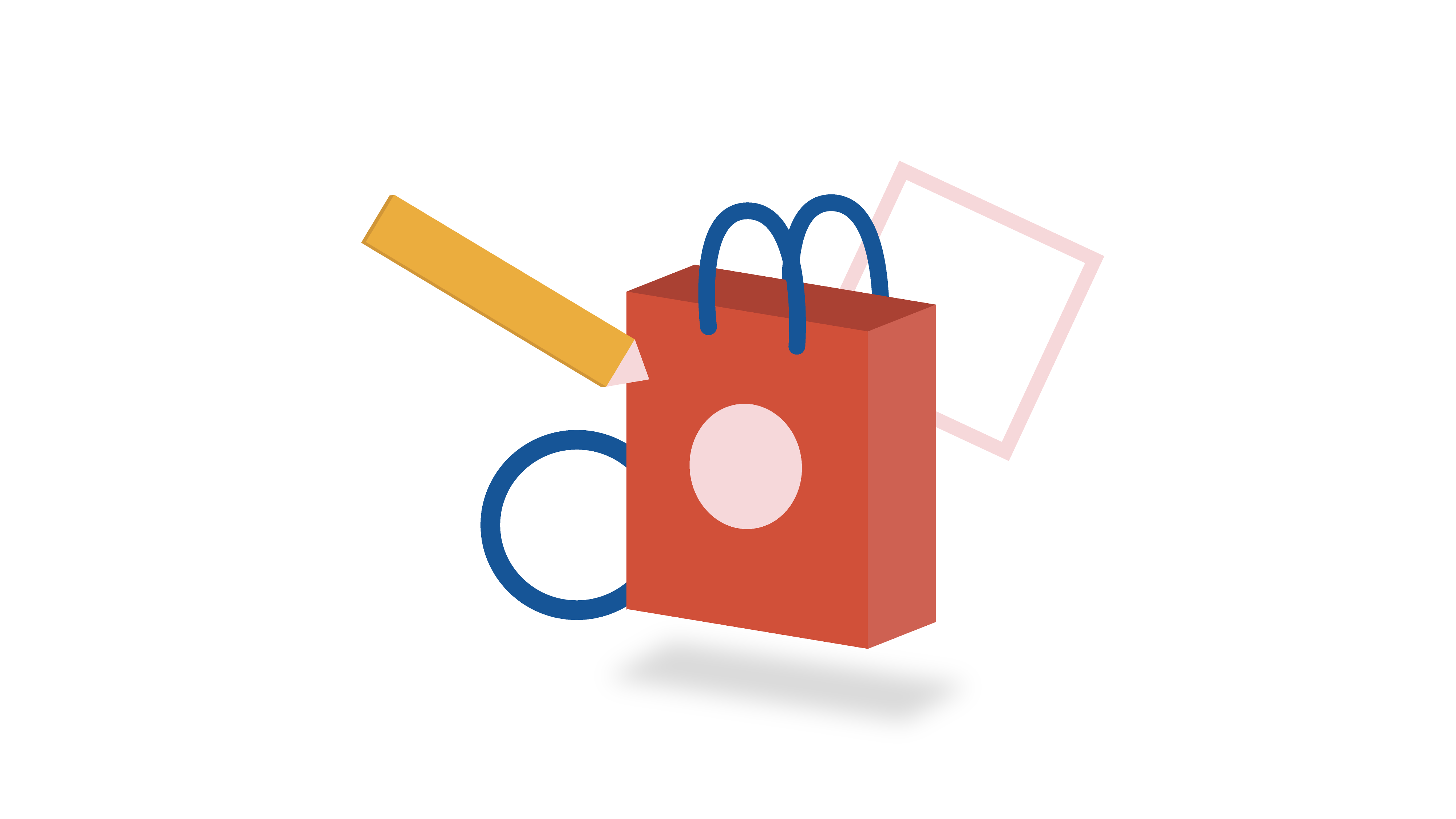Hello!
Everything your business does should be geared towards creating a great brand experience, from your social media presence to your customer service. A positive brand experience is the difference between a customer lost and a customer won, so it’s important to get it right.
But what exactly does brand experience mean? And how can startups and small businesses on a budget get it right? Read on to discover how to create a great brand experience, no matter how tight your budget.
What is brand experience?
‘Brand experience’ is a nebulous concept, difficult to define. And those definitions that do seek to pin down exactly what brand experience is are often excessively wordy or vague.
 As the name suggests, brand experience is about how your customers experience your brand. It sounds simple, but it’s important to emphasize the ‘experience’ aspect here.
As the name suggests, brand experience is about how your customers experience your brand. It sounds simple, but it’s important to emphasize the ‘experience’ aspect here.
Your customers experience your brand in a variety of ways: your logo, paid ads, social media, product packaging, in-store experience… The list is endless.
These interactions between your customer and your business are known as brand touchpoints. Collectively, these touchpoints make up your customers’ experience of your business: what they think and feel about your brand.
Through careful engineering of these touchpoints, you can create a solid community of trusting consumers who are engaged with your brand.
How to achieve phenomenal brand experience on a shoestring budget
A great brand experience doesn’t need to break the bank. Let’s look at some key brand touchpoints to see why they matter, and how you can make them perfect on a budget.
Speed up customer service using AI tools
Customer service is the most candid point at which customers interact with your brand. More often than not, your customers contact you with issues or complaints.
 The way you handle these directly impact your reputation online, making it arguably the most important brand touchpoint in this list.
The way you handle these directly impact your reputation online, making it arguably the most important brand touchpoint in this list.
The key to successful customer service is speed and sincerity.
Replying to customer complaints quickly and genuinely shows your customers they are valued, enhancing their goodwill towards your brand.
Unfortunately, it’s highly unlikely that your startup has the funds to pay for a 24/7 live helpdesk. But a close approximation is possible through the use of AI chatbots.
Onsite chat plugins guide your customers through the most common queries they face, using realistic language that feels natural, rather than robotic. No, it’s not the same as a real person, but it’s enough to placate your customers and make them feel appreciated.
Pick the best moments for social media engagement
You don't need a high budget to leverage social media. Indeed, social media optimization and marketing are among those high-ROI marketing tactics you may use whether you have a low-budget startup or business. Social media is a crucial brand touchpoint. Virtually all of your customers are regularly active on social, and it offers fantastic scope for brands to get creative.
And because social media is essentially free (outside of paid ads), it’s also an affordable way to create a memorable brand experience.
 The best brands on social are those that post regularly. A token post here and there doesn’t give your followers value.
The best brands on social are those that post regularly. A token post here and there doesn’t give your followers value.
Start by planning your social editorial calendar out in advance. Social shares, status updates, and so on should all be planned and scheduled with an affordable automation tool.
But simply posting content isn’t enough to create a great brand experience — you should actively engage with your customers on social too. Inviting interaction with your followers shows them that you’re not just a lurker — you value their input.
Of course, replying to each comment on every post is a drain on your time. And while you could certainly use a social autoresponder tool to automate this, it lacks warmth. Instead, focus on the top comments for each post and reply to those. These will be most visible to your followers, enhancing their experience even if you don’t reply directly to them.
- Use a budget social media scheduling tool and have a plan so you don’t waste time.
- Engage judiciously and focus on top comments only.
- Focus on 1-2 core channels and create content about EVERYTHING that you do.
- Social media = time spent, so be strategic about how you tackle it.
Create a low-cost pop-up experience
From Carlsberg’s beer-dispensing billboard to Volkswagen’s piano staircase, events are used by big businesses to enhance brand experience all the time. These events typically cost a lot of money and are prohibitively expensive for smaller businesses.
However, SMEs can create effective but affordable real-world events for their customers with a pop-up shop or launch event.
 These are an effective way of creating an experiential brand event on a budget and are often used by startups to quickly increase sales, grow customers, and boost brand awareness.
These are an effective way of creating an experiential brand event on a budget and are often used by startups to quickly increase sales, grow customers, and boost brand awareness.
For solopreneurs looking to grow their brand into a profitable business, pop-ups are a great way to go.
There are thousands of affordable pop-up venues all over the country — empty spaces that are perfect for you to flex your creative muscles and make your own.
The emphasis here is on turning your pop-up into an event. Build hype on social long before, and cover the event itself on your Story or IGTV.
Invite your biggest customers and encourage them to share the event on their own social feeds with a branded hashtag. Provide free samples, in-house expert advice, and goodie bags for an experience your customers won’t forget.
This is arguably the most expensive brand experience strategy on this list, but it’s a worthwhile investment for your business, and you will create great branded content that you can use for months and years to come. Managed well, this can be a hugely cost-effective strategy.
Make an extra effort for your top customers
With a small budget, you can’t afford to go above and beyond for every one of your customers, but in some ways it’s better if you don’t — establishing that you’ll do something extra for your top customers will provide incentive for people to stick with you.
If you’re in the ecommerce game, then consider using your product packaging to add a dash of flair to your service. It might sound like a prosaic touchpoint, but great packaging can really make your brand feel premium (and make customers feel appreciated).
Consider how popular product unboxings are today. YouTube is replete with countless unboxing videos for everything from children’s toys to cosmetics.
Nailing your packaging will not only impress the recipient but also impress anyone following their unboxing — and it needn’t be expensive. A handwritten note goes a long way, and costs almost nothing.
Another option that’s viable for non-ecommerce companies is providing exceptional after-sales service.
For example, if someone shows huge commitment to your brand (spending a lot of money with you, or recommending you to a large audience), you can reach out to them directly — through social media, or even a phone call — to thank them.
 However, you go about it, showing that there are huge benefits to being part of your brand community is powerful. When new customers see these benefits being provided, they’ll be much more eager to work with you until they get to enjoy them as well.
However, you go about it, showing that there are huge benefits to being part of your brand community is powerful. When new customers see these benefits being provided, they’ll be much more eager to work with you until they get to enjoy them as well.
Pick your moments to show gratitude, and the effort will pay off in a big way.
Optimize your business processes
Your internal business processes can actually affect how your brand comes across. At a minimum, they significantly limit your ability to impress (the more time you spend on regular operations, the less time you have to focus on brand experiences).
 Think about all the elements that go into your overall business model. For instance, how good is your inventory management? If your needs are limited, you can find an open-source inventory management tool to help you sort your stock levels without costing you anything.
Think about all the elements that go into your overall business model. For instance, how good is your inventory management? If your needs are limited, you can find an open-source inventory management tool to help you sort your stock levels without costing you anything.
Some internal business processes also directly impact certain brand touchpoints by determining the quality and nature of your customer-targeted materials, e.g. invoicing.
A late and/or sloppy invoice makes you look bad — keep that prospect at bay by using a free invoice generator to keep your invoices timely and accurate. Little details like this don’t cost a lot of time (or money), but can really help you send the right message to clients and partners — paying attention to brand details will help you as you scale, protecting you against piecemeal adoption and poor brand equity.
So, how can you create awesome brand experiences on a shoestring budget?
Remember to brand all your internal processes as well, because this will bolster your internal brand experience (it matters how your employees perceive you, because it affects how they represent you to customers).
Create a great brand experience, and you create loyal customers that last a lifetime. The secret to an affordable strategy is taking small steps that create wide ripples: reward a select few shoppers on a public stage, passing on a positive experience to the rest of your customers.
Follow the tips above today and you’ll deliver a positive experience to your customers that’s truly memorable.
- 6 Technologies To Improve Your Branding
- How to Boost Your Brand Reputation if You Are a Small Business?
- Brand Marketing and Performance Marketing in a Nutshell
- Why Metaverse is Rising: Crypto, NFT, and Big Brands
- 7 Tips for Protecting Your Brand Against Cyberattacks
- 7 Effective Tactics For Humanizing Your Brand (With Examples)
- 5 Ways to Increase Brand Awareness Using NFTs
- How to Successfully Rebrand Your Business
Thank you!
Subscribe to our newsletter! Join us on social networks!
See you!






